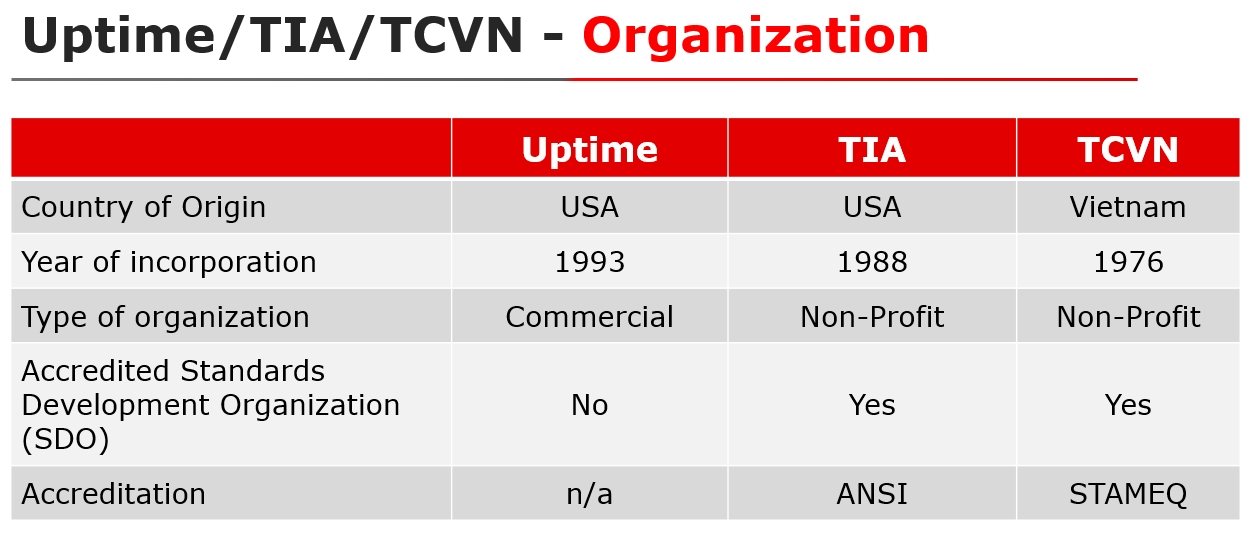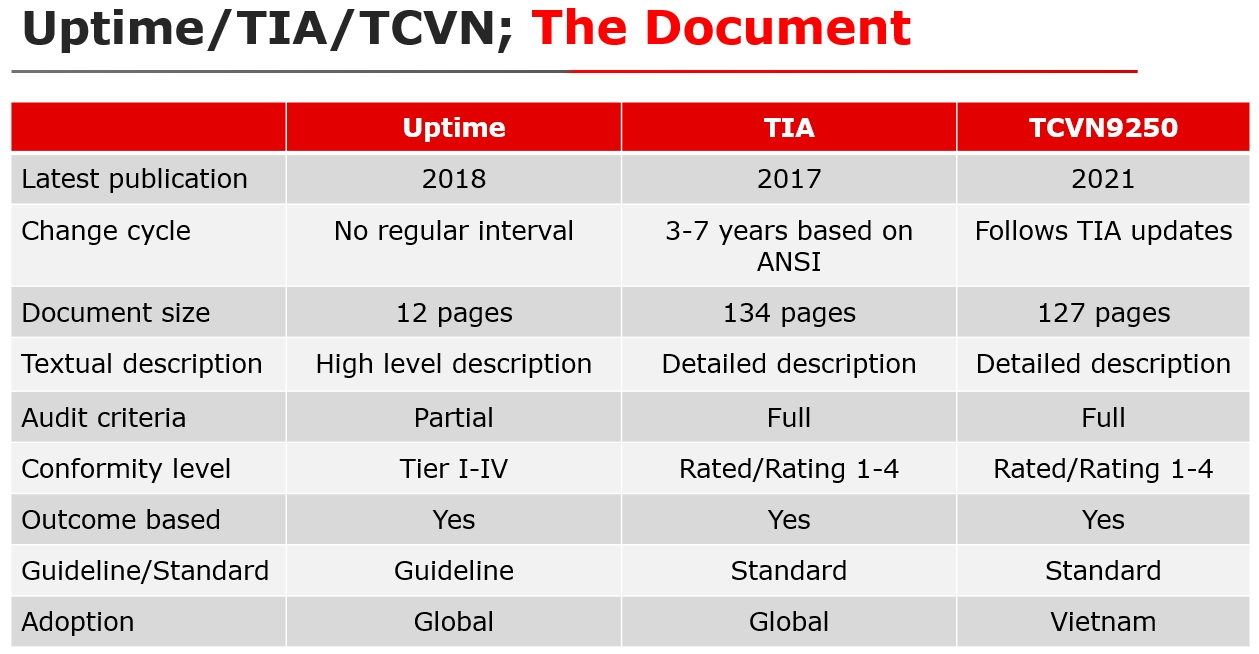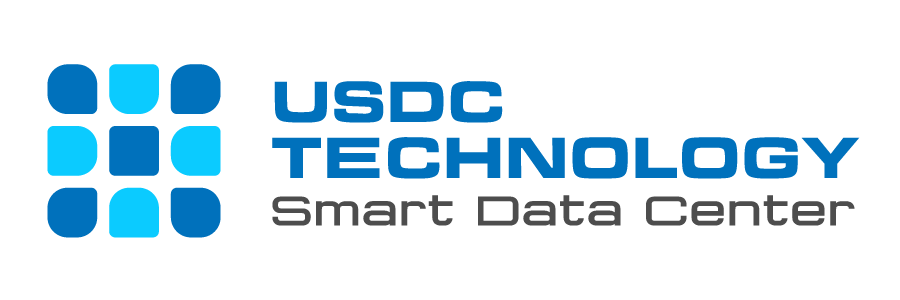In the ever-evolving landscape of data center infrastructure, three significant standards have been instrumental in shaping reliability, efficiency, and standardization: the Uptime Institute’s Tier System, the Telecommunications Industry Association’s TIA-942, and Vietnam’s TCVN 9250. For data center professionals in Vietnam, understanding the history and impact of these standards is crucial for aligning with global best practices and ensuring operational excellence.
Origins of Uptime’s Tier System
The Uptime Institute revolutionized data center infrastructure with the introduction of the Tier Classification System in 1995. This system categorizes data centers into four tiers, each representing a different level of resilience. Tier IV represents the pinnacle of resilience, while Tier I is the baseline. This classification became a global benchmark for measuring data center reliability, providing operators with a clear and structured way to assess uptime performance.
The Birth of TIA-942
Recognizing the need for a comprehensive telecommunication standard for data centers, the Telecommunications Industry Association (TIA) initiated the development of TIA-942 in the early 2000s. Released in 2005, TIA-942 expanded beyond the electrical and mechanical aspects emphasized by Uptime’s Tier Standard Topology (TST), incorporating architectural and telecommunication infrastructure considerations. This holistic approach offered a more integrated perspective on data center design and operation.
Convergence and Divergence
The initial convergence between Uptime and TIA-942 occurred when TIA-942 incorporated the Tier concepts from Uptime. As TIA-942 gained traction, market confusion arose regarding the use of the term “Tier.” To address this, Uptime requested TIA in 2013 to replace “Tier” with “Rated/Rating” in their documentation. TIA complied, and the 2014 revision of TIA-942 marked the formal separation of the two standards.

A Brief History of TCVN 9250
Parallel to these developments, Vietnam established its own set of data center standards through the TCVN system. Developed by the Directorate for Standards, Metrology, and Quality (STAMEQ), TCVN 9250 incorporates elements relevant to the local context while aligning with international benchmarks. This standard includes guidelines on power management, cooling efficiency, physical and cyber security, and operational best practices.
Early Development
– The origins of TCVN (Vietnamese Standards) date back to the establishment of STAMEQ. The Directorate was tasked with standardizing industrial, commercial, and quality practices across Vietnam.
– TCVN 9250 specifically relates to standards in certain industries or technical areas. Each TCVN standard addresses different sectors such as construction, agriculture, electronics, etc.
Formation of TCVN 9250
– The specific TCVN 9250 standard was developed to address particular needs in the industry it applies to. This standard typically includes guidelines, technical specifications, and quality benchmarks essential for maintaining consistent and reliable practices.
– The formation of this standard involves a comprehensive process, including research, industry consultation, draft preparation, and approval by relevant authorities.

Initial Release
– The initial release of TCVN 9250 was part of a broader effort by STAMEQ to align Vietnamese industry practices with international standards, ensuring competitiveness and quality.
– The specific date of the first issuance of TCVN 9250 is an important milestone, marking its official acceptance and implementation within the relevant sectors.
Revisions and Updates
– Over the years, TCVN 9250 has undergone several revisions to keep pace with technological advancements, industry practices, and international standards.
– Revisions ensure that the standards remain relevant and effective, incorporating feedback from industry stakeholders and advancements in technology and methodologies.
International Alignment
– Part of the development and revision process involves aligning TCVN 9250 with international standards such as ISO, IEC, or other relevant global standards organizations.
– This alignment helps Vietnamese industries integrate more seamlessly with global markets, ensuring products and services meet international quality and safety standards.
Impact on Vietnamese Data Centers
TCVN 9250 ensures that Vietnamese data centers remain at the forefront of technological advancement and international competitiveness, positioning Vietnam as a key player in the global data center industry. Aligning with these standards enhances reliability, efficiency, and sustainability, driving economic growth and innovation.
Conclusion
The history of Uptime vs. TIA-942 vs. TCVN 9250 exemplifies the collaborative yet divergent paths in the development of data center standards. For data center professionals in Vietnam, understanding these standards and their evolution is critical to implementing best practices and achieving operational excellence. While Uptime and TIA have taken independent paths, both continue to influence global standards. TCVN 9250 ensures that Vietnamese data centers remain at the forefront of technological advancement and international competitiveness, positioning Vietnam as a key player in the global data center industry.
Media Contact
Universal Smart Data Center Technology
Phone: (+84) 28 73080708
Email: info@usdc.vn


